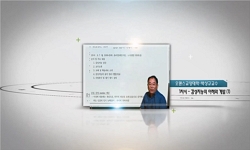Many studies have reported lower empathic ability in children and adolescents with conduct problems, including aggression, than children with normal behavior patterns. However, as empathy has been defined differently among researchers, it is unclear w...
http://chineseinput.net/에서 pinyin(병음)방식으로 중국어를 변환할 수 있습니다.
변환된 중국어를 복사하여 사용하시면 됩니다.
- 中文 을 입력하시려면 zhongwen을 입력하시고 space를누르시면됩니다.
- 北京 을 입력하시려면 beijing을 입력하시고 space를 누르시면 됩니다.

품행문제 청소년의 공감손상: 인지공감의 손상인가 정서공감의 손상인가? = Impairment of Empathy in adolescents with conduct problems: Is it due to the deficit in affective empathy or cognitive empathy
한글로보기https://www.riss.kr/link?id=A104133372
- 저자
- 발행기관
- 학술지명
- 권호사항
-
발행연도
2014
-
작성언어
Korean
-
주제어
품행문제 ; 인지공감 ; 정서공감 ; 안면모방 ; 표정읽기 ; conduct problem ; cognitive empathy ; emotional empathy ; facial mimicry ; facial expression reading
-
등재정보
KCI등재
-
자료형태
학술저널
- 발행기관 URL
-
수록면
127-146(20쪽)
-
KCI 피인용횟수
14
- 제공처
-
0
상세조회 -
0
다운로드
부가정보
다국어 초록 (Multilingual Abstract)
Many studies have reported lower empathic ability in children and adolescents with conduct problems, including aggression, than children with normal behavior patterns. However, as empathy has been defined differently among researchers, it is unclear which empathic ability is impaired in those with conduct problems. Therefore, this study examined whether adolescents with conduct problems showed impairment in affective or cognitive empathy. Affective empathy was measured using emotional contagion, a facial mimicry reaction that occurs in response to the facial expression of a target individual. Cognitive empathy was measured using an emotional reading task. Fourteen adolescents with conduct problems and 23 adolescents without such problems participated in this study. The two groups showed differences in facial mimicry but not in the emotional reading task. Adolescents with conduct problems showed a smaller magnitude of facial mimicry to dynamic happy and sad expressions. In particular, when viewing sad expressions, the zygomaticus muscle activity in those with conduct problems was relatively high; this is the muscle reaction that typically occurs when expressing happiness. These results suggest that adolescents with conduct problems have a normal ability to recognize other people’s feelings, but are impaired in affective empathy, i.e., the ability to feel other's emotions in a congruent way.
국문 초록 (Abstract)
공격적이거나 품행장애를 가진 아동청소년의 공감 능력 손상은 많은 연구에서 보고된다. 그러나 연구마다 공감을 다르게 정의하고 있어서, 어떤 측면의 공감능력이 손상된 것인지에 대해서...
공격적이거나 품행장애를 가진 아동청소년의 공감 능력 손상은 많은 연구에서 보고된다. 그러나 연구마다 공감을 다르게 정의하고 있어서, 어떤 측면의 공감능력이 손상된 것인지에 대해서 분명한 결론을 내리기 쉽지 않은 실정이다. 따라서 본 연구에서 품행문제 청소년의 공감 손상이 인지공감의 문제인지 정서공감의 문제인지 알아보았다. 인지공감은 상대방의 생각이나 관점, 정서를 이해하는 능력이므로 얼굴표정에서 정서를 읽는 능력으로 측정하였다. 정서공감의 초기단계는 상대방의 표정을 자동적으로 모방함으로써 동일한 정서를 경험하게 되는 정서전염이므로, 얼굴표정에 대한 안면모방 반응으로 정서공감을 측정하였다. 품행문제 청소년 14명과 일반 청소년 23명을 대상으로 인지공감과 정서공감을 측정한 결과 인지공감에서는 품행문제 청소년들과 일반청소년의 차이가 없었으나, 정서공감에서는 차이가 나타났다. 품행문제 청소년은 일반 청소년보다 기쁨/슬픔 표정을 짓고 있는 동영상에 대한 안면모방이 적었으며, 특히 슬픔 표정에 대해서는 웃을 때 움직이는 대협골근 수축반응이 나타났다. 이러한 결과는 품행문제를 가진 청소년들이 상대방의 정서를 인식하는 인지공감에는 손상이 없으나 상대방의 정서를 공유하는 정서공감에 손상이 있음을 보여준다.
참고문헌 (Reference)
1 이은아, "초등학생용 공격성 척도 개발 및 타당화" 경성대학교 대학원 2011
2 조경자, "정서 상태와 얼굴표정간의 연결 능력의 발달" 한국감성과학회 10 (10): 127-138, 2007
3 차화정, "자기보고형 한국어판 아동용 공감지수(EQ-C) 척도의 타당화 예비연구" 한국심리학회 산하 한국발달심리학회 24 (24): 63-81, 2011
4 김혜리, "얼굴표정 자극에 대한 아동의 안면모방과 정서공감간의 관계" 한국인지및생물심리학회 24 (24): 433-452, 2012
5 정희원, "아동의 친사회적 행동척도개발 및 타당화 예비 연구-11, 12세 아동을 중심으로" 한국아동학회 26 (26): 15-27, 2005
6 구훈정, "아동 색 선로 검사의 표준화 연구" 대한소아청소년 정신의학회 19 (19): 28-37, 2008
7 김아름, "또래지위에 따른 마음읽기 능력의 차" 한국심리학회산하학교심리학회 6 (6): 149-169, 2009
8 김혜리, "또래괴롭힘 참여역할에 따른인지적·정서적 공감의 차이" 한국심리학회 산하 한국발달심리학회 26 (26): 1-20, 2013
9 김은아, "남녀 중학생의 또래괴롭힘 방어행동과 공감, 자기효능감, 학급규준에 대한 믿음의 관계" 한국심리학회 산하 한국발달심리학회 24 (24): 59-77, 2011
10 오인수, "괴롭힘을 목격한 주변인의 행동에 영향을 미치는 심리적 요인 : 공감과 공격성을 중심으로" 한국초등교육학회 23 (23): 45-63, 2010
1 이은아, "초등학생용 공격성 척도 개발 및 타당화" 경성대학교 대학원 2011
2 조경자, "정서 상태와 얼굴표정간의 연결 능력의 발달" 한국감성과학회 10 (10): 127-138, 2007
3 차화정, "자기보고형 한국어판 아동용 공감지수(EQ-C) 척도의 타당화 예비연구" 한국심리학회 산하 한국발달심리학회 24 (24): 63-81, 2011
4 김혜리, "얼굴표정 자극에 대한 아동의 안면모방과 정서공감간의 관계" 한국인지및생물심리학회 24 (24): 433-452, 2012
5 정희원, "아동의 친사회적 행동척도개발 및 타당화 예비 연구-11, 12세 아동을 중심으로" 한국아동학회 26 (26): 15-27, 2005
6 구훈정, "아동 색 선로 검사의 표준화 연구" 대한소아청소년 정신의학회 19 (19): 28-37, 2008
7 김아름, "또래지위에 따른 마음읽기 능력의 차" 한국심리학회산하학교심리학회 6 (6): 149-169, 2009
8 김혜리, "또래괴롭힘 참여역할에 따른인지적·정서적 공감의 차이" 한국심리학회 산하 한국발달심리학회 26 (26): 1-20, 2013
9 김은아, "남녀 중학생의 또래괴롭힘 방어행동과 공감, 자기효능감, 학급규준에 대한 믿음의 관계" 한국심리학회 산하 한국발달심리학회 24 (24): 59-77, 2011
10 오인수, "괴롭힘을 목격한 주변인의 행동에 영향을 미치는 심리적 요인 : 공감과 공격성을 중심으로" 한국초등교육학회 23 (23): 45-63, 2010
11 박성희, "공감 교육에 대한 개관 연구 :1970년 이후 영어로 출판된 연구를 중심으로" 한국교육학회 41 (41): 22-518, 2003
12 Dapretto, M., "Understanding emotions in others : mirror neuron dysfunction in children with autism spectrum disorders" 9 (9): 28-30, 2005
13 Blair, J., "Theory of mind in the psychopath" 7 (7): 15-25, 1996
14 Happé, F., "Theory of mind and social impairment in children with conduct disorder" 14 (14): 385-398, 1996
15 Yirmiya, N., "Theory of mind abilities in individuals with autism, Down syndrome, and mental retardation of unknown etiology : The role of age and intelligence" 37 (37): 1003-1014, 1996
16 Vachon, D. D., "The(Non)Relation Between Empathy and Aggression : Surprising Results From a Meta-Analysis" 2013
17 Litvack-Miller, W., "The structure of empathy during middle childhood and its relationship to prosocial behavior" 1997
18 Happé., "The role of age and verbal ability in the theory of mind task performance of subjects with autism" 66 (66): 843-855, 1995
19 Miller, P. A., "The relation of empathy to aggressive and externalizing/antisocial behavior" 103 (103): 324-, 1988
20 Rizzolatti, G., "The mirror-neuron system" 27 : 169-192, 2004
21 Feshbach, N. D., "The development of prosocial behavior" Academic Press 315-338, 1982
22 Auyeung, B., "The children’s empathy quotient and systemizing quotient : Sex differences in typical development and in autism spectrum conditions" 39 (39): 1509-1521, 2009
23 Endresen, I. M., "Selfreported empathy in Norwegian adolescents:Sex differences, age trends, and relationship to bullying" 2001
24 LeSure-Lester, G. E., "Relation between empathy and aggression and behavior compliance among abused group home youth" 31 (31): 153-161, 2000
25 Dimberg, U., "Rapid facial reactions to emotional facial expressions" 39 (39): 39-45, 1998
26 Batson, C. D., "Perspective taking : Imagining how another feels versus imaging how you would feel" 23 (23): 751-758, 1997
27 Davis, M. H., "Personality and empathic accuracy" 144-168, 1997
28 Loeber, R., "Patterns and development of antisocial child behavior" 2 : 77-116, 1985
29 Pfeifer, J. H., "Mirroring others'emotions relates to empathy and interpersonal competence in children" 39 (39): 2076-2085, 2008
30 Davis, M. H., "Measuring individual differences in empathy : Evidence for a multidimensional approach" 44 (44): 113-, 1983
31 Dadds, M. R., "Learning to ‘talk the talk’ : the relationship of psychopathic traits to deficits in empathy across childhood" 50 (50): 599-606, 2009
32 Park, J. Y., "Korean Facial Expressions of Emotion (KOFEE). Seoul, Korea: Section of Affect &Neuroscience, Institute of Behavioral Science in Medicine, Yonsei University College of Medicine"
33 Baron-Cohen, Wheelwright, S., "Is there a"language of the eyes"? Evidence from normal adults, and adults with autism or Asperger syndrome" 4 (4): 311-331, 1997
34 Borke, H., "Interpersonal perception of young children: Egocentrism or empathy?" 5 (5): 263-, 1971
35 Hughes, J. N., "Influence of the teacher-student relationship in childhood conduct problems : A prospective study" 28 (28): 173-184, 1999
36 Coie, J. D., "Handbook of child psychology, 5th ed. Vol 3. Social, emotional, and personality development" John Wiley & Sons Inc 779-862, 1998
37 Hess, U., "Facial mimicry and emotional contagion to dynamic emotional facial expressions and their influence on decoding accuracy" 40 (40): 129-141, 2001
38 Dimberg, U., "Facial electromyography and emotional reactions" 27 (27): 480-494, 1990
39 de Wied, M., "Facial EMG responses to dynamic emotional facial expressions in boys with disruptive behavior disorders" 40 (40): 112-121, 2006
40 de Wied, M., "Facial EMG and heart rate responses to emotion inducing film clips in boys with disruptive behavior disorders" 46 (46): 996-1004, 2009
41 Baron-Cohen, S., "Essential Difference: Male and Female Brains and the Truth about Autism" Basic Books 2003
42 Burke, D. M., "Empathy in sexually offending and nonoffending adolescent males" 16 (16): 222-233, 2001
43 Dolan, M., "Empathy in mental illness" Cambridge University Press 33-48, 2007
44 Cohen, D., "Empathy in conduct-disordered and comparison youth" 32 (32): 988-998, 1996
45 de Wied, M., "Empathy in boys with disruptive behavior disorders" 46 (46): 867-880, 2005
46 de Wied, M., "Empathy dysfunction in children and adolescents with disruptive behavior disorders" 626 (626): 97-103, 2010
47 Jolliffe, D., "Empathy and offending : A systematic review and meta-analysis" 9 (9): 441-476, 2004
48 Hoffman, M., "Empathy and moral development. Implications for justice and caring" Cambridge University Press 2000
49 Eisenberg, N., "Empathy : Conceptualization, measurement, and relation to prosocial behavior" 14 (14): 131-149, 1990
50 Davis, M. H., "Empathy : A social psychological" Westview Press 1994
51 Ellis, P. L., "Empathy : A factor in antisocial behavior" 10 (10): 123-133, 1982
52 Basch, M. F., "Empathic understanding : A review of the concept and some theoretical considerations" 31 (31): 101-126, 1983
53 Sonnby-Borgström, M., "Emotional empathy as related to mimicry reactions at different levels of information processing" 27 (27): 3-23, 2003
54 Hatfield, E., "Emotional contagion" Cambridge university press 1994
55 Deschamps, P., "Electromyographic responses to emotional facial expressions in 6–7year olds : A feasibility study" 85 (85): 195-199, 2012
56 Sutton, J., "Disruptive behaviour, avoidance of responsibility and theory of mind" 18 (18): 1-11, 2000
57 APA., "Diagnostic and statistical manual of mental disorders" American Psychiatric Association 2002
58 Hogan, R., "Development of an empathy scale" 33 (33): 307-, 1969
59 Lipps, T., "Das wissen von fremden Ichen (Vol. 1)" Engelmann 1907
60 Shechtman, Z., "Cognitive and affective empathy in aggressive boys : Implications for counseling" 24 (24): 211-222, 2002
61 Williams, J., "Children's color trails" 10 (10): 211-223, 1995
62 Sutton, J., "Bullying and ‘Theory of Mind’ : A Critique of the ‘Social Skills Deficit’ View of Anti-Social Behaviour" 8 (8): 117-127, 1999
63 Baron-Cohen, S., "Another advanced test of theory of mind : Evidence from very high functioning adults with autism or Asperger syndrome" 38 (38): 813-822, 1997
64 Bryant, B. K., "An index of empathy for children and adolescents. Child development" 413-425, 1982
65 Lovett, B. J., "Affective empathy deficits in aggressive children and adolescents : A critical review" 27 (27): 1-13, 2007
66 오경자, "ASEBA 아동청소년 행동평가척도 매뉴얼" (주)휴노 2010
67 Mehrabian, A., "A measure of emotional empathy1" 40 (40): 525-543, 1972
68 Pfeifer, J. H., "14 “Mirror, Mirror, in My Mind”: Empathy, Interpersonal Competence, and the Mirror Neuron System" 183 : 2011
동일학술지(권/호) 다른 논문
-
중학생의 공감, 사회적 자기효능감, 지각된 규준과 또래괴롭힘 방어행동과의 관계
- 한국심리학회 산하 한국발달심리학회
- 이승연
- 2014
- KCI등재
-
이차순위 마음이론에 대한 암묵적 이해와 외현적 이해의 발달: 과제의 단순화와 속임수 명시효과를 중심으로
- 한국심리학회 산하 한국발달심리학회
- 김윤지
- 2014
- KCI등재
-
부모-자녀 애착이 자살생각에 미치는 영향에서 자아존중감과 우울의 종단적 매개효과 연구
- 한국심리학회 산하 한국발달심리학회
- 윤태희
- 2014
- KCI등재
-
중·고등학교 가출청소년의 가정복귀 요인: 개인, 가정환경, 학교요인의 분석
- 한국심리학회 산하 한국발달심리학회
- 김혜온
- 2014
- KCI등재
분석정보
인용정보 인용지수 설명보기
학술지 이력
| 연월일 | 이력구분 | 이력상세 | 등재구분 |
|---|---|---|---|
| 2027 | 평가예정 | 재인증평가 신청대상 (재인증) | |
| 2021-01-01 | 평가 | 등재학술지 유지 (재인증) |  |
| 2018-01-01 | 평가 | 등재학술지 유지 (등재유지) |  |
| 2015-01-01 | 평가 | 등재학술지 유지 (등재유지) |  |
| 2011-01-01 | 평가 | 등재학술지 유지 (등재유지) |  |
| 2009-01-01 | 평가 | 등재학술지 유지 (등재유지) |  |
| 2007-01-01 | 평가 | 등재 1차 FAIL (등재유지) |  |
| 2005-01-01 | 평가 | 등재학술지 유지 (등재유지) |  |
| 2002-01-01 | 평가 | 등재학술지 선정 (등재후보2차) |  |
| 1999-07-01 | 평가 | 등재후보학술지 선정 (신규평가) |  |
학술지 인용정보
| 기준연도 | WOS-KCI 통합IF(2년) | KCIF(2년) | KCIF(3년) |
|---|---|---|---|
| 2016 | 1.22 | 1.22 | 1.36 |
| KCIF(4년) | KCIF(5년) | 중심성지수(3년) | 즉시성지수 |
| 1.39 | 1.45 | 2.085 | 0.23 |




 KCI
KCI




